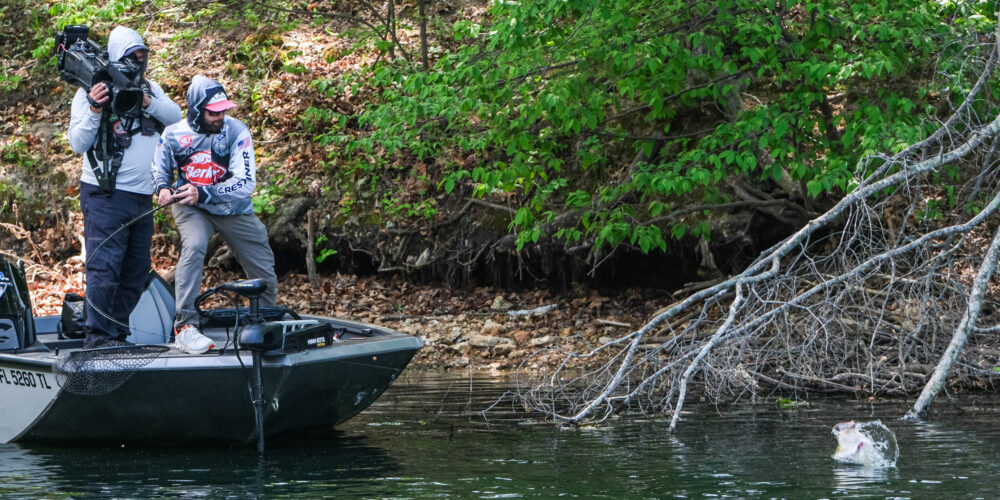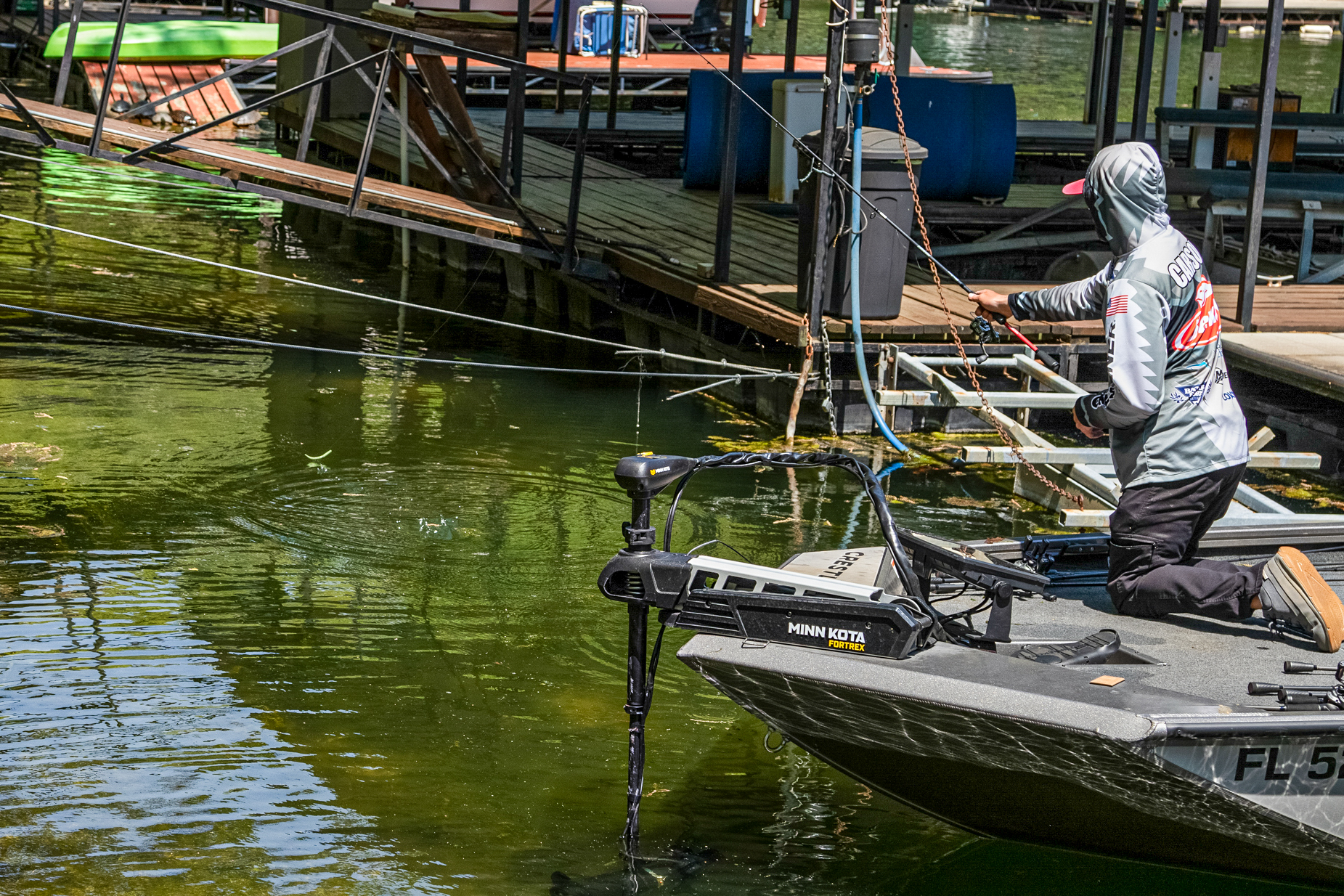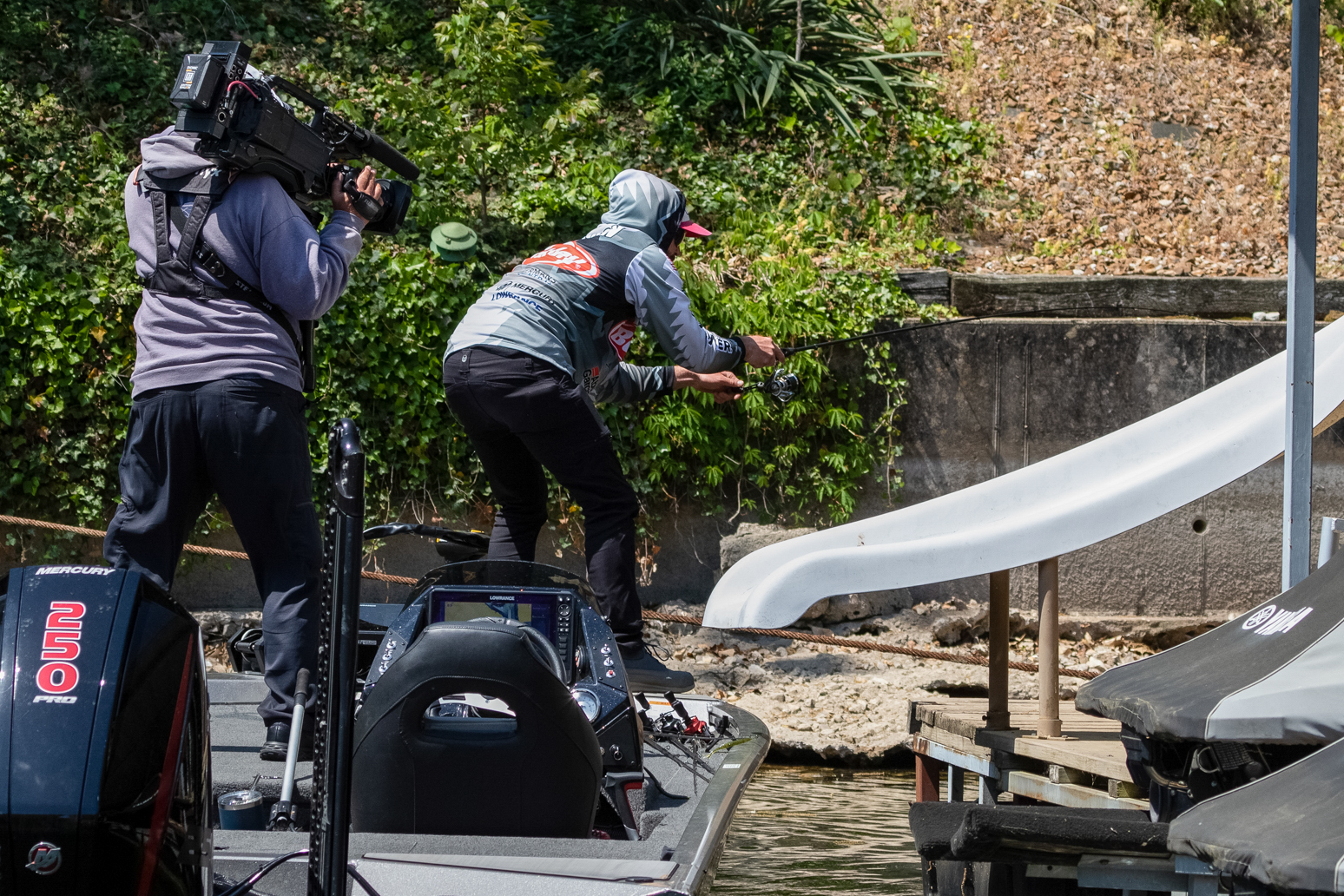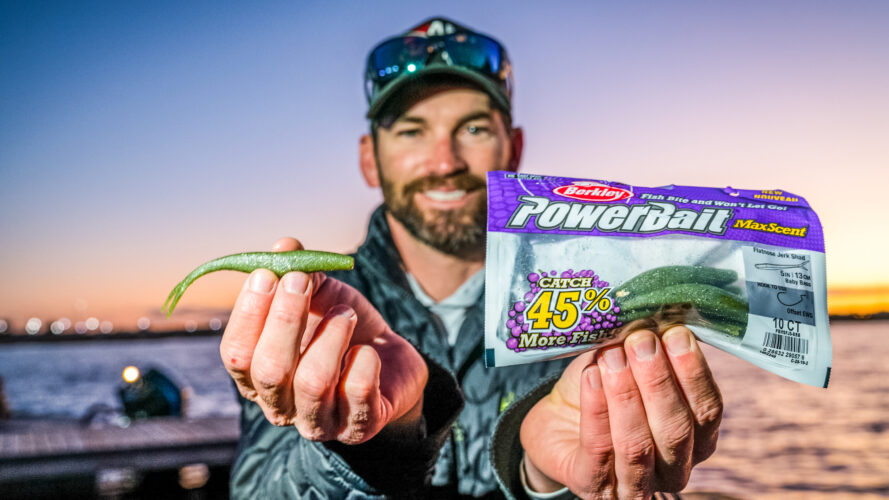Getting a feel for sight-fishing the old-fashioned way with Keith Carson

Using your eyes to fish for bass has taken on an entirely new meaning in today’s world of forward-facing sonar. With so much of bass fishing focused on scanning for ‘dots’ and ‘floaters’ with eyes glued to a screen, the old tried-and-true method of looking at bass with your own two eyes when fishing shallow has taken a back seat.
No matter the current trend, though, Mercury pro Keith Carson still prefers to look at spawning bass with his eyeballs when he’s fishing shallow around the spawn.
Sight-fishing is something the Bass Pro Tour rookie grew up doing in DeBary, Florida, and over the years he’s accumulated many tricks and helpful tips that allow him to read and understand bass and what it takes to catch them.
Early sight-fishing lessons

When Carson was just getting into bass fishing, his go-to fishing hole was a small park in DeBary called Gemini Springs, named for its two natural springs that produce more than six million gallons of sparkling-clear water every day. That thoroughly transparent water gave him the perfect training ground for watching bass in their natural environment.
“Even though I didn’t know what I was doing and had trouble catching them at first, I could see them everywhere,” he said. “That kept me coming back because I saw giant bass every time I went. If I had grown up fishing in muddy water, who knows if I would have kept at this.”
Learning to fish the pristine waters of Gemini Springs and traveling and practicing as a Strike King co-angler with a boater in the Phoenix Bass Fishing League Gator Division events in his early years set him on a course as a sight-fisherman.
“He (Joe Kremer) loved to sight-fish and taught me a lot about how to line up on fish and which bass are catchable and which you shouldn’t waste your time on,” he said. “That’s one of the biggest things to learn with fishing – especially tournament fishing when you have to manage your time.”
Reading bass like a book

Finding bass – whether cruising or on beds – is often the easiest part. Getting them to bite can be a whole different story. Carson believes each bass will give you clues if you’re paying attention.
“For spawning bass, one of the obvious things is (to see) if they’re locked on to a bed,” he said. “Those are fish you can catch pretty easily. If you move past them with your boat and they keep their eyes on you, that’s an aggressive characteristic, and you’ll get those immediately. The ones that swim off and away from the bed when you see them are still catchable, but it’ll take a little longer.”
As bass swim away from the bedding area, Carson notes how far away they go and how long it takes for them to return.
“If a fish swims away and comes back within 30 seconds, you can still catch that fish fairly quickly,” he said. “If it takes them between 30 seconds to a minute, those will take a lot more time. For me, it depends on the size of the fish and if it’s worth your time. I’ve stayed on fish for four hours before, but you can only do that in a tournament situation if you already have a decent limit and need that fish to cull.”
When he sees a pair of bedding bass, Carson always looks to catch the bigger female first.
“That’s one of the biggest tips with bed fishing,” he said. “You can’t catch the male first. If the female hasn’t laid eggs yet, she’ll just go find another male. Last year on Lake of the Ozarks during the Tackle Warehouse Invitationals event, I shook off a male 30 to 40 times before the female got fed up and ate my bait.”
Rotating through baits

Another key to reading fish is knowing which bait they’ll react to. Carson generally keeps a trio of different baits ready and will rotate through them until he gets them to bite.
“I don’t use a ton of different baits, but one big thing I’ll do is always start with the setup with the heaviest line so I have the best chance of landing them,” he said. “My first bait will be a Berkley PowerBait MaxScent Creature Hawg on 30-pound-test Berkley X9 braid or 20-pound Trilene 100% fluorocarbon.”
If that doesn’t work, Carson backs up his boat and start downsizing with a Berkley Powerbait MaxScent Flatnose Jerk Shad on 15-pound-test fluorocarbon.
“If that’s still not getting them to react, my last resort is spinning gear,” he said. “I’ll go with light line and a Berkley Powerbait MaxScent The General. That last scenario is where your chances of losing the fish go way up, but my thoughts are that you’re never going to catch them if you don’t get them to bite in the first place.”